The Lady Vanishes (1938)
Directed by: Alfred Hitchcock
Written by: Ethel Lina White, Frank Launder, Sidney Gilliat
Starring: Dame May Whitty, Margaret Lockwood, Michael Redgrave, Paul Lukas
UK
AVAILABLE ON DVD
RUNNING TIME: 92 min
THE HITCHCOCK CAMEO: Walking on the platform of London’s Victoria Station as Gilbert and Iris Henderson return to the city, wearing a black coat and puffing on a cigarette
REVIEWED BY: Dr Lenera, Official HCF Critic
In the European country of Bandrika, tourist Iris Henderon returns to her hotel with her two friends after a long hike, and prepares to return to Britain to marry a man she does not love. A nearby avalanche has blocked the railway line, and Iris and her friends, as well as several other travelers, are forced to spend the night. They include Gilbert Redman, a musicologist with whom Iris argues over the music and dancing going on in his room, and Miss Froy, an elderly governess. A folk singer is murdered under her window, and the next morning, while everyone heads for the train to take them home, Iris is struck on the head by a falling planter, apparently meant for Miss Froy. On the train Iris falls asleep, and when she wakes up, Froy is gone!….
So here we have it, Hitchcock’s finest British film, and to be honest I just couldn’t wait to rave about this wonderful picture, quite possibly the second best comedy thriller of all time [it won’t surprise you to learn that the film I think is the number one comedy thriller of all time will also come up in this series of reviews, but not for a while!]. It’s a film which still seems remarkably fresh today, perhaps because films of this type aren’t made much at the moment, perhaps not, but its beguiling mixture of mystery, suspense, comedy and romance is a superb balancing act, no element being allowed to overshadow any other and everything just coming together and unifying into an almost perfect whole, though to be honest its script is so good that you’d have to be a truly awful filmmaker to make a bad film from it. Its premise is fascinating, its characters are memorable, its pacing is perfect, and to be honest the only glaring faults are some of its technical aspects such as the usual poor back projection and obvious sets, both of which can be forgiven considering when the film was made, and the total unbelievability of the story [for a start, if you wanted to smuggle a message through several countries, would you really employ a little old lady who seems like she could be knocked down at any moment], but then Hitchcock did say that, when beginning work on a film: “the first thing I leave out is plausibility”.
The odd thing is that The Lady Vanishes was actually a project that was began by another director, Roy William Neil, Hitchcock beginning to be courted by American producers around this time, especially David O’ Selznick. The Frank Launder and Sidney Gilliat script had already been written. Called The Lost Lady, it was based on The Wheel Spins by Ethel Lina White and altered the plot somewhat, notably changing the old lady who accidentally stumbles upon information to a fully fledged spy, as well as changing and adding characters. An exterior shooting trip to Yugoslavia ended in disaster; after the assistant director injured himself, the police read the script, considered it anti-Yugoslavian, and sent everyone home. Neill bailed and Hitchcock, anxious to complete his two-year contract to producer Edward Black, took over. He altered the script, such as making the setting of the first third the ficticious ‘Bandrika’ and adding a gun battle near the end. Margaret Lockwood beat out Nova Pilbeam, Vivien Leigh and Lilli Pamer for her role, while her co-star, stage actor Michael Redgrave, who had had a tiny role in Sabotage, didn’t enjoy the act of making a film, but both became stars as a result of The Lady Vanishes. Hitchcock cut a love scene and the knocking out of a villain from the final cut, but somewhere along the line a scene which was in early cuts, of Charters getting his pyjamas wet, was lost too. The US version lost a few seconds of the scene immediately following for some reason. The film was Hitchcock’s most successful yet.
The first third of The Lady Vanishes mostly just introduces the characters and only has the odd plot occurrence like a strangling where the hands come out of the side of the screen in deliberately melodramatic fashion. I’ve read that this first section is boring, from people who evidently don’t have any patience and insist that something happen right away, and I don’t think I was too keen on it the first time I saw it, but with each viewing it gets better. The characters are just great and their dialogue sparkles. There’s the hero and heroine who initially hate each other because he keeps her up half the night playing music and when evicted from his room goes in hers, the sweet old governess who we know straight away can’t be what she seems, the adulterous couple, and, best of all, Charters and Caldicott, who think cricket is the most important thing in the world. A brilliant parody of Englishness, the characters turned in up several later films and even had their own TV series. They actually share a bed where each one is wearing half of a pair of pyjamas, and it was the preamble to this scene that was lost after early showings. It now seems that they are possibly gay and it wasn’t intended, though they still get flustered when the maid whose room they are sharing comes in to undress. Hitchcock probably didn’t mind anyway and there are some great double entendres throughout, one of the best, partly because Redgrave says it so matter of factly, being, “my father always taught me never desert a lady in trouble…he even carried that as far as marrying mother.”
So eventually everyone does get on the train and the film really kicks into high gear. The disappearance of Miss Froy is eerily handled – Iris awakes and she’s just not there – and the tension increases and increases as it seems that nobody believes that Froy was on the train, though never at the expense of the comedy. That’s one of the most brilliant things about The Lady Vanishes; the comedy never detracts from the suspense and vice versa. Instead, the viewer is biting his or her nails and chuckling at often exactly the same time. A perfect example of this is when Gilbert is fighting a villainous magician. Iris is suddenly useless all of a sudden and just seems to dance about while Gilbert is fighting for his life, while the use of various magician’s props add both an extra comic touch and a slightly uneasy one. Though not really an action-packed film, Gilbert does get to climb out of one train window and into another 007-style as another train hurtles by him [and amazingly the back projection looks better than that used in Octopussy 53 years later!], and not a moment is wastes as it hurries to its climactic gun battle, which remains pretty exciting, and this time round really seemed to me it was evoking the mood of the time in which the film was made and even making a political statement.
Yes, The Lady Vanishes may seem ever-so-light and frothy when seen now, but the lead-up to World War 2 is ever-present, and not just in the vague shady going-ons in the background but in some of the characters. Neither Charters and Caldicott nor the adulterous pair want to get involved for differing reasons and it is because of this that they deny seeing Mis Froy. Charters and Caldicott eventually come to their senses, but Eric never really does, and dies waving a white flag. I mentioned earlier how much of the story doesn’t bear scrutiny, and it’s more the details, from the nun wearing high heels [and oh yes, there are some of Hitchcock’s most sexual leg shots near the beginning of the film!] to the packet of tea blowing onto the outside of a window, that one probably remembers more, not to mention odd things like a Foreign Office minister having a Steinway piano in his office, though this does make for a great final scene that will never fail to make you smile. Directorially this is a little less flashy than Hitchcock’s last few films and minus a bravura set-piece or two that perhaps would overshadow the rest of the film [possibly because he came to the project late], but there are some nice details nonetheless, like the images of Iris’s friends blurring as she leaves them on the train, and later Iris seeing Froy’s face, which is now cleverly made to actually look quite sinister, on the faces of the other occupants of her compartment.
Margaret Lockwood is so lively and lovely in the lead, if a little awkward in her early scenes. Redgrave makes for a somewhat whimsical hero, but is a perfect foil for Lockwood, and the chemistry between the two is very strong. Dame Mae Witty is memorable as the ‘lady’, though there is one potentially bad moment when the 72 year old actress supposedly jumps off the train and starts running for the hills. By then though the film is so captivating that it instead becomes a real “hell yeah” moment. You also don’t notice the total absence of a music score, though the piece that would later become known as the Colonel Bogey March from The Bridge Over The River Kwai plays a major part in the tale. The Lady Vanishes is pure entertainment, as charming and delightful today as it must have been back in 1938. In 1950 came So Long At The Fair, which was closer to the original urban legend that inspired White’s book about the woman returning to her hotel to find her mother gone and nobody remembering she was there. The idea was also used in an episode of the Alfred Hitchcock Presents TV series called Into Thin Air and the more recent Flightplan, while the basic premise informed many films such as Breakdown. The Lady Vanishes was remade officially in 1979 and on TV in 2012, sticking much closer to the book.
Rating: 










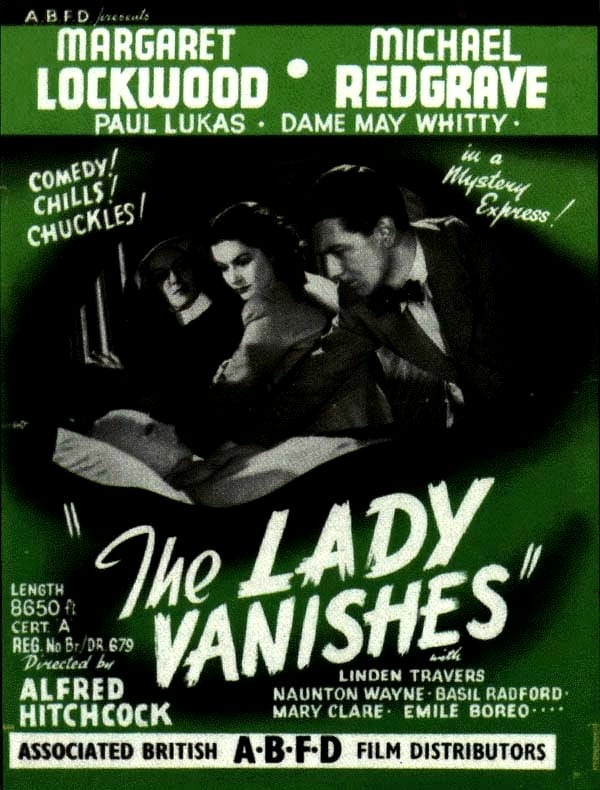
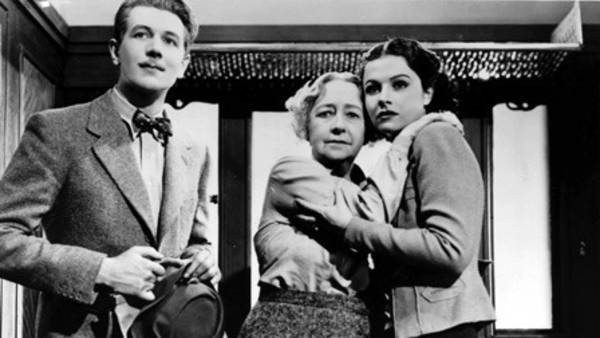
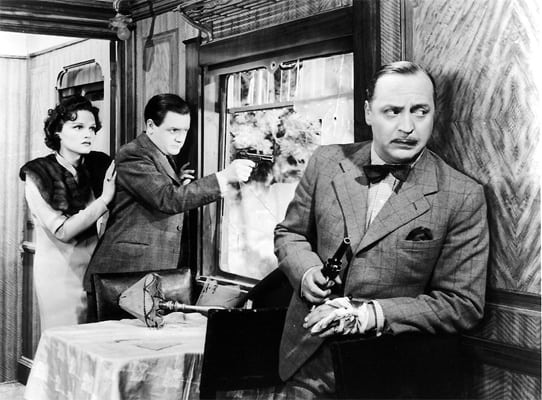

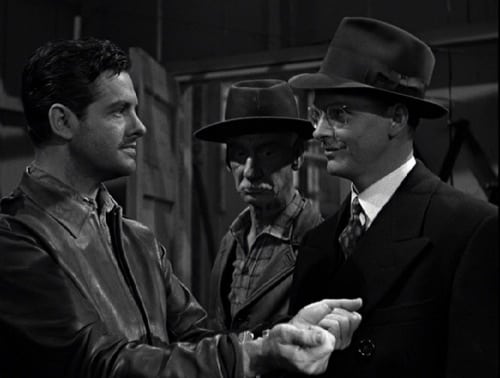
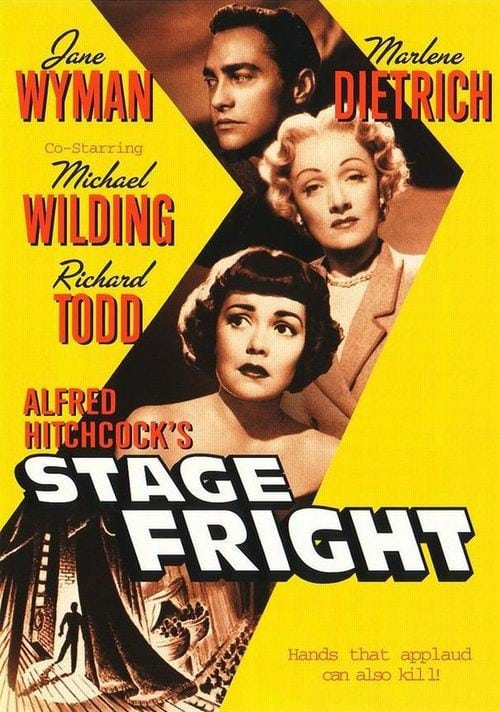
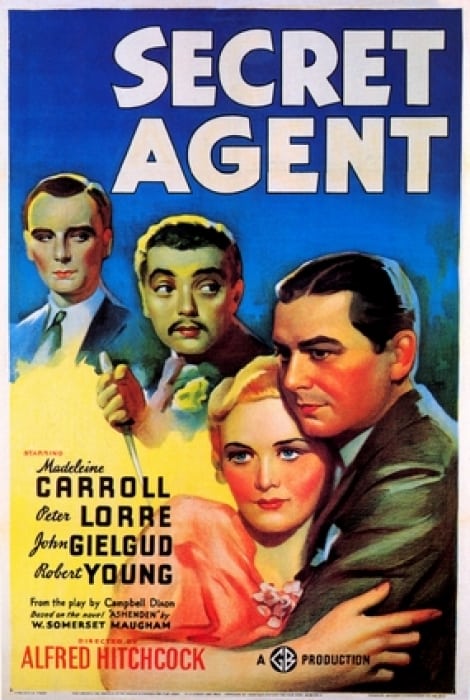
Be the first to comment